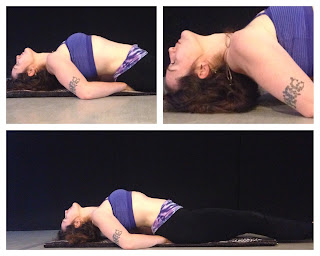I am so proud of my clients who have begun to take more time for their own care; who view their monthly, or twice-monthly massages as a part of a Self-Care routine that insures their continued comfort and ability in their day-to-day. Our bodies often are the last thing we think to care for, unless we are in so much pain we can't sleep or sit comfortably, or we can't walk or move throughout our day without extreme discomfort. It shouldn't have to feel this bad to become an excuse to finally take care of ourselves.
Luxury is really a misnomer when it comes to getting massage or bodywork. It shouldn't be labeled a luxury to care for yourself. One of my clients works in construction, and he tells me that his co-workers often give him a hard time for getting regular massage; 'oh, that must be nice', they tell him. He laughs, but as hard as he is on his own body; lifting, twisting, walking around on cement all day, he knows that what keeps him going is his regular massages. He tells me, he probably couldn't get out of bed in the morning without massage.
Hyperbole aside, I stumbled across an article recently from a 2008 issue of Body Sense. Lee Picciuto explained this Luxury rhetoric well:
"Some people believe that massage therapy is either an indulgence for the wealthy or a "treat" for special occasions. Most therapists have some clients who only come in once a year, usually for a birthday or special holiday.
I have also encountered clients who have been influenced by others and made to feel guilty for spending money on a monthly massage session. These clients seem to think of massage therapy as a frivolity they don't deserve.
Admittedly, massage therapy has a monetary cost, but that should be weighed against the benefits of the treatment--diminished stress, decreased pain, improved moods, etc. There is usually a way to budget for a monthly massage with a bit of reprioritizing."
My clients who have committed to regular massage have noticed a huge difference in the way their bodies feel; decreased chronic pain in common areas that hold stress, or do repetitive motions, and they tell me the just feel better, less "stressed". We hold the tension we collect from the world in our bodies; our physical reactions to what we experience, in addition to what we do (walking, running, sitting at a computer, gardening, lifting heavy boxes...). It is always a joy to witness my clients continued relief of their pain and stress, these are not things I believe they should carry with them every day.
I notice in my clients a difference in the tissue, the way the muscles move and feel, the way the body reacts to receiving massage, how quickly muscles release tension and adhesions. I cannot speak for their change in emotions, but I do notice their stress dissipate. I notice more smiling. I notice a deeper connection with their breathing on the table, and an understanding of how they are living in their bodies from appointment to appointment, as we continue to change and effect a more comfortable way to live with each massage.
Think about you commitment to caring for yourself. It isn't selfish, it isn't a luxury. You can save money when you sign up for a "monthly maintenance massage" with a 6-month commitment.








